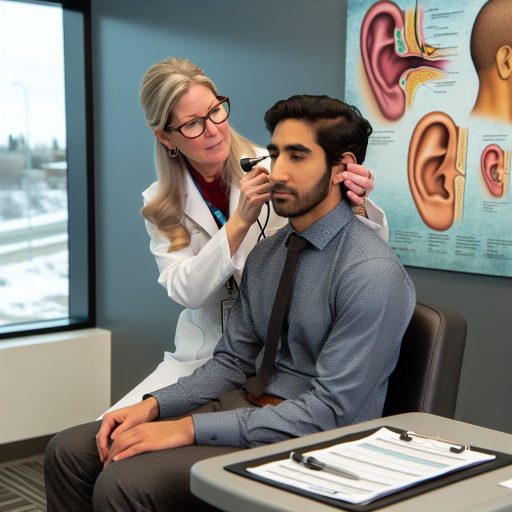Understanding the Diverse Clientele: Cultural and Linguistic Challenges
Cultural Awareness
Cultural variations influence how individuals perceive communication disorders.
A speech-language pathologist must be culturally competent to provide effective care.
Understanding cultural backgrounds helps in forming supportive relationships.
Additionally, cultural norms can impact a client’s willingness to participate in therapy.
Linguistic Differences
Language diversity presents significant challenges for speech-language pathologists.
Many clients may communicate in languages other than English.
Pathologists must assess and address these linguistic needs appropriately.
Failure to consider linguistic backgrounds can hinder the effectiveness of therapy.
Assessment and Evaluation Challenges
Conducting assessments in multiple languages creates complexity.
Pathologists must find reliable assessment tools suited for diverse populations.
Using culturally and linguistically appropriate evaluations is essential.
Moreover, misdiagnosis can occur without proper assessments for language differences.
Resource Limitations
Access to resources can be limited in diverse communities.
Finding interpreters for different languages can prove challenging.
Moreover, educational materials may not always be available in various languages.
This limitation can affect the quality of services provided by pathologists.
Parental Involvement
Engaging parents in therapy can create additional cultural considerations.
Parents may have diverse beliefs regarding communication and disabilities.
Trust-building with families from different backgrounds requires patience and sensitivity.
Pathologists should actively involve parents in the therapy process.
Interdisciplinary Collaboration
Collaboration with other professionals can enhance client outcomes.
Pathologists must work closely with educators and healthcare providers.
Furthermore, recognizing cultural nuances helps in developing comprehensive care plans.
Effective communication among professionals is critical for success.
Navigating Insurance and Funding Limitations for Speech Therapy Services
Understanding Insurance Challenges
Speech-language pathologists frequently encounter challenges with insurance coverage.
Unlock Your Career Potential
Visualize a clear path to success with our tailored Career Consulting service. Personalized insights in just 1-3 days.
Get StartedMany policies limit the number of sessions per year.
Providers often face hurdles in obtaining prior authorizations.
Insurance companies may classify speech therapy as non-essential.
This classification complicates reimbursement for many patients.
Funding Limitations
Many families struggle with the cost of private therapy sessions.
Public funding for speech therapy is often insufficient.
Medicaid coverage varies significantly between states.
This variance can leave patients without necessary support.
Additionally, budget cuts can affect schools’ ability to provide services.
Advocating for Policy Changes
Pathologists often advocate for better insurance policies.
They work to highlight the importance of comprehensive coverage.
Collaborative efforts can lead to legislative changes.
Advocacy can also involve educating families about their rights.
This education helps families navigate complex systems effectively.
Resources for Speech-Language Pathologists
Professional organizations provide valuable resources for pathologists.
These resources often include guidelines for dealing with insurance issues.
Online forums allow therapists to share strategies and experiences.
Continuing education programs help practitioners stay updated.
Access to these resources enhances service delivery for clients.
Addressing the Emotional and Psychological Aspects of Communication Disorders
Understanding the Emotional Impact
Communication disorders can significantly affect a person’s emotional well-being.
Many individuals experience frustration and isolation due to their challenges.
Moreover, communication difficulties can lead to low self-esteem and anxiety.
Parents and families often feel overwhelmed as they navigate these challenges.
Professionals must understand these emotional aspects to offer effective support.
Strategies for Emotional Support
Creating a supportive environment is crucial for individuals with communication disorders.
Listening actively shows empathy and validates their feelings.
Encouragement fosters resilience and a positive outlook on communication.
Setting achievable goals can boost their confidence over time.
Additionally, providing education about their condition can alleviate fears.
The Role of Speech-Language Pathologists
Speech-language pathologists play a vital role in addressing emotional challenges.
They assess not only the speech and language issues but also the emotional impact.
Through therapy, they help clients develop coping strategies.
Furthermore, they guide families to create a nurturing environment.
Collaboration with other professionals enhances the overall care approach.
Building a Strong Support Network
Encouraging social interactions helps individuals connect with others.
Support groups can provide reassurance and shared experiences.
Moreover, involving family members in therapy sessions strengthens bonds.
Educating loved ones on the disorder fosters understanding and patience.
Ultimately, a strong support system improves emotional resilience.
Learn More: Challenges And Rewards Of Being An Audiologist
Dealing with Interprofessional Collaboration and Team Dynamics
Importance of Teamwork
Effective collaboration enhances patient outcomes for speech-language pathologists.
Working with diverse professionals fosters learning and innovation.
Teamwork creates a more holistic approach to patient care.
Common Challenges in Collaboration
Communication barriers often hinder effective teamwork.
Different professional jargon can lead to misunderstandings.
Conflicting priorities may arise between disciplines.
Lack of clearly defined roles can create confusion within the team.
Strategies for Improving Team Dynamics
Establishing clear communication protocols can mitigate misunderstandings.
Regular team meetings encourage open dialogue among members.
Emphasizing respect for each member’s expertise enhances collaboration.
Building trust within the team is essential for successful interactions.
Role of Leadership
Leaders play a crucial role in facilitating teamwork.
Effective leaders encourage a culture of collaboration.
They also provide support and resources for team members.
Recognizing and addressing conflicts promptly preserves team cohesion.
Professional Development Opportunities
Workshops on interprofessional collaboration can be beneficial.
Participating in team-building exercises promotes understanding.
Continuing education courses often include aspects of teamwork.
Mentorship programs can guide new professionals in collaborative settings.
Uncover the Details: Understanding the Scope of Kinesiology in Health Care
Managing High Caseloads and Time Constraints in Clinical Practice
Understanding the Dilemma
Speech-language pathologists (SLPs) often navigate challenging caseloads.
High caseloads put significant pressure on SLPs.
Time constraints further complicate effective patient care.
SLPs must balance quality care with overwhelming demands.
Balancing Caseloads
First, SLPs should prioritize their workload.
They can use management tools to organize tasks efficiently.
Setting realistic goals helps maintain focus on essential tasks.
Additionally, developing a prioritization system enhances productivity.
Client Needs Assessment
SLPs must assess client needs on an individual basis.
Understanding each client’s unique requirements supports effective planning.
Regular evaluations allow for timely adjustments to treatment plans.
Utilizing Technology
Technology can streamline many administrative tasks.
Software tools assist in scheduling and documentation.
Telepractice options can also help manage caseloads effectively.
Time Management Strategies
Effective time management is essential for SLPs.
Creating a structured daily schedule can improve focus.
Incorporating breaks allows for sustained productivity throughout the day.
Delegating Responsibilities
SLPs should consider delegating certain tasks when possible.
Collaboration with assistants can relieve some pressure.
Additionally, engaging with administrative staff can be beneficial.
Continuous Professional Development
Ongoing education enhances an SLP’s skills in managing caseloads.
Workshops and seminars provide valuable strategies for efficiency.
Networking with peers also fosters resource sharing and support.
Overcoming Burnout
Burnout is a common challenge in the field of speech-language pathology.
SLPs should practice self-care to maintain their well-being.
Establishing boundaries between work and personal life is crucial.
Seeking Support
Support from colleagues can alleviate feelings of isolation.
Professional counseling services may also provide necessary help.
Creating a supportive workplace culture encourages open dialogue about stressors.
Regular Reflection
SLPs should engage in regular reflection on their practices.
Identifying areas for improvement fosters professional growth.
Taking time to assess personal goals can help maintain motivation.
Learn More: Advanced Technologies Used by Modern Podiatrists

Staying Updated with Continuous Professional Development and Training
The Importance of Continuous Learning
Continuous learning is essential for speech-language pathologists (SLPs).
New research and techniques emerge regularly in the field.
Staying informed enhances the quality of care provided to clients.
Challenges of Keeping Up
SLPs often face time constraints due to busy schedules.
Balancing clinical work and professional development can be difficult.
Additionally, access to quality training resources can vary by location.
Effective Strategies for Professional Development
Setting aside regular time for learning is crucial.
SLPs can benefit from online courses and webinars.
Attending workshops and conferences fosters networking opportunities.
Joining professional organizations offers access to valuable resources.
The Role of Technology in Training
Technology has transformed the landscape of professional training.
Online platforms provide flexibility and accessibility for SLPs.
Mobile applications can aid in skill development and practice.
Emphasizing Collaboration and Mentorship
Connecting with colleagues can enhance learning experiences.
Mentorship programs provide guidance and support for new practitioners.
Sharing knowledge within teams encourages a culture of continuous improvement.
Delve into the Subject: Dental Specialties: Exploring Career Options in Canada
Utilizing Technology and Teletherapy in a Transitioning Healthcare Landscape
Embracing Technological Advancements
Speech-language pathologists increasingly adopt technology in their practice.
This shift enhances therapy delivery and patient engagement.
Moreover, technology streamlines administrative tasks for clinicians.
Teletherapy: Expanding Access to Care
Teletherapy removes geographical barriers to service.
Patients can receive care from the comfort of their homes.
Additionally, it allows for flexible scheduling and increased availability.
As a result, more individuals can access the help they need.
Training and Support for Professionals
Proper training is essential for successful teletherapy implementation.
Clinicians must develop skills for online communication.
Moreover, they should understand how to use digital tools effectively.
Ongoing support from employers enhances staff confidence and competence.
Challenges of Remote Therapy
Despite its benefits, teletherapy presents challenges.
Technical issues can disrupt sessions, impacting consistency.
Some clients may struggle with technology use.
Additionally, confidentiality concerns require stringent security measures.
Future Directions for Speech-Language Pathology
The future of speech-language pathology may involve hybrid models.
Blending in-person and teletherapy could optimize care.
Furthermore, ongoing research is essential to assess effectiveness.
Technology and teletherapy can redefine patient care.
Promoting Advocacy and Awareness for Speech-Language Pathology Services
Understanding the Importance of Advocacy
Advocacy plays a crucial role in expanding awareness of speech-language pathology services.
It helps communicate the value of these services to families and communities.
Ultimately, advocacy influences policy decisions that affect service delivery.
Challenges in Raising Awareness
Many people are unaware of speech-language disorders and their impact.
Moreover, misconceptions about the profession can lead to stigma.
Inconsistent messaging from various organizations complicates awareness efforts.
Strategies for Effective Advocacy
- Utilize social media platforms to share success stories.
- Engage community leaders in awareness campaigns.
- Provide workshops and seminars for healthcare professionals.
These strategies can effectively promote understanding of speech-language pathology.
Building Collaborative Networks
Collaboration between professionals enhances advocacy efforts.
Form partnerships with schools, healthcare facilities, and community organizations.
These relationships strengthen outreach initiatives significantly.
Educating the Public
Community education is vital for raising awareness.
Organize public events to provide information about speech-language disorders.
Distributing educational materials can also support understanding.
Engaging with Policymakers
Advocacy must include lobbying for legislative support.
Engage policymakers by providing data on service needs and outcomes.
Building relationships with legislators can lead to essential policy changes.
Celebrating Speech-Language Pathology Month
National Speech-Language Pathology Month offers a prime opportunity for awareness.
Employ themed activities to engage the public and media.
Highlight the contributions of speech-language pathologists in your community.
Evaluating Advocacy Efforts
Regularly assess the impact of awareness initiatives.
Gathering feedback from participants can provide valuable insights.
Utilize this information to improve future advocacy measures.
Additional Resources
Implications of Language Barriers for Healthcare: A Systematic …




